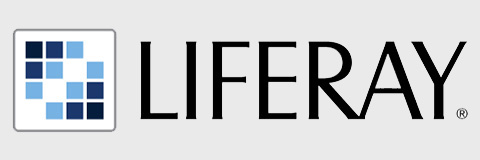
Are you passionate about the Web and Free Software Movement? Are you looking for an opportunity to play your part? Perhaps you’ve considered contributing to the WordPress project? This tutorial is for you! Our free software developers have contributed to the core of the application and now they’d love to introduce you to the development process of the most popular on-line publishing platform in the world. Cheer up and follow these steps to get started!
Subscribe
You can begin your journey by subscribing to a variety of platforms used by contributers. This helps you establish a connection with the community and remain in touch.
WordPress
Subscribing to WordPress is a must. WordPress.org serves, among other things, to document procedures and publish information related to its development platform. This will be your main reference, so subscribe and log in.
Once you are connected, we invite you to consult the section of the website concerning Development and to get to know the different teams and their missions. This is also a great opportunity to subscribe to various newsletters if you wish to follow a particular stream of development (marketing, modules, themes, documentation, etc.)
Slack
People discuss their contributions via the Slack collaborative communication platform. They hold meetings, disseminate information and help users reach their contribution objectives. On Slack, you will find all the influential developers in the WordPress community, it is the ideal place to ask them questions!
Please read the subscription documentation carefully. The procedure can sometimes be confusing. If you are having trouble signing in to your WordPress.org account, visit the subscription page and the new instructions will show up. You can then sign in using this link: https://wordpress.slack.com/.
Trac
Your last step before contributing! Check out the Trac ticket manager. Every change in WordPress is documented here. The main developers use this tool to approve and integrate changes to the core. To ensure effective, accurate and coordinated development, using documentation is mandatory. Now we can get started with developing for WordPress…
Following the Best Practices
Let the fun begin! Before writing code, you will need to integrate the project’s best practices and development standards. Some documents will be more useful to you than others. We suggest that you focus on these sections: Core Contributor Handbook, Best Practices, and Writing Patches. For PHP developers, you will also be interested in the PHP Coding Standards and Core API documentation.
The Environment
The majority of developers use Varying Vagrant Vagrants (VVV), which runs under all operating systems. VVV is an open source Vagrant configuration focused on WordPress development. It is mostly used to develop themes, modules, and plugins as well as for contributions to WordPress core. It may be a bit complex to install optional Vagrant modules, so if you are using a Linux environment, just make sure you have the “build-essential” and “libc6-dev” libraries before you get started. Feel free to work with other tools as well. VVV is not the only choice you have. But if you choose any other tools, please do not forget to report your developments on WordPress’ core code repository, to track the testing and progress of your contributions!
Here is an example of installing a development environment using VagrantPress and Git deployed with Ubuntu.
git clone https://github.com/vagrantpress/vagrantpress.git
cd vagrantpress
vagrant up
rm -fr tests
git clone git://develop.git.wordpress.org/ tests
vagrant provision
SVN and Git
You have probably noticed that the code repository uses SVN. If you wish to contribute to the heart, we strongly recommend using it. But there is no obligation, it is also possible to go through Git. You will find the documents you need to use for these two versioning systems in the following libraries: How to Use Subversion for developers, plugin, codex for SVN and Using Git for the second.
CSS and Javascript
WordPress compresses some resources. To enable you to work, you must disable this function in the “wp-config.php”. Add “define (‘SCRIPT_DEBUG’, true);”.
Code Validation
WordPress code standards are most likely different from those you are used to. A code format checker can provide great help. Use PHP_CodeSniffer with the WordPress Coding Standards. You can also read the WordPress style guidelines for detailed installation instructions.
Test-based Contribution
Did you know that you do not have to be a seasoned developer to contribute to WordPress? For example, testing is a good way to participate in development while learning. Trac lists the corrections to be tested. If you are starting out, work first on non-urgent corrections.
Baby Steps… To Big Dreams!
Yes, contributing to a free software project is indeed a huge investment of your time. Reading, setting things up, making configurations, downloading, etc.
However, once you’ve passed the first steps and made your first few contributions, you will officially be a free software contributor! Now take this chance to make your first baby steps and realize your big dream of becoming a free software developer!








